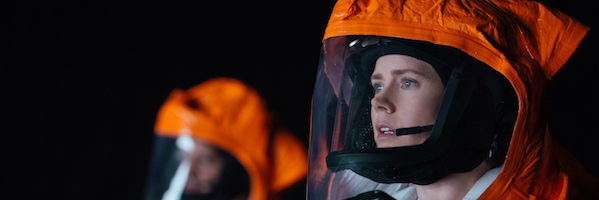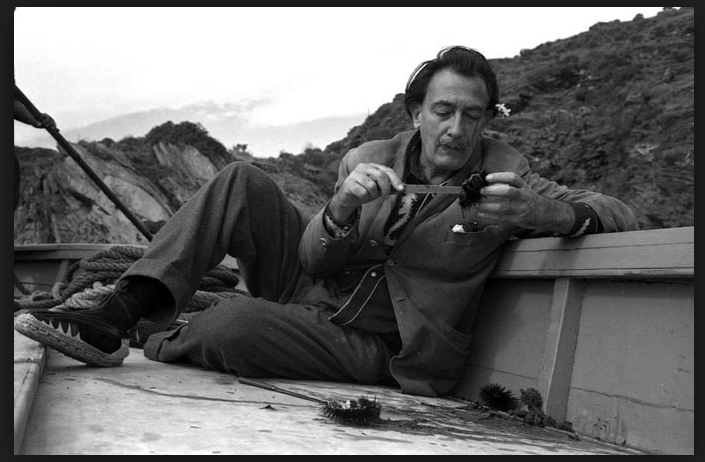
I’m back. Remember me? It’s time for another one of my unpopular opinion pieces, and this time it’s about everyone’s favorite 2016 artsy-fartsy sci-fi hit (and Oscar contender) Arrival. The film has gotten nearly unanimous critical praise, and if that wasn’t enough to raise your suspicions, how about the constant use of that critical kiss-of-death word “refreshing”? Were they all paid to use that specific word? Makes you wonder, huh? But before I get into the meat of this essay I’m going to offer up two definitions to bear in mind whilst reading:
1.) Pretentious: attempting to impress by affecting greater importance than is actually present.
2.) Artsploitation: the exploitation of an art-house cinema audience, especially in regard to the critical merits of a film.
Thanks to Google for number one and as for number two, it’s my own coinage. Artsploitation refers, like other exploitation genre tags, to a particular audience’s desire to consume a particular kind of film regardless of its quality. In the case of “art-house” cinema, this means that as long as a film looks pretty or conforms to the audience’s notion of “artistic” merit—most often translating to a level of incomprehensibility that one viewer can use to claim a superior “understanding” over others—said “art” film can then be excused of all its flaws. Regardless of how bad they are or how poorly it may conform to other essential tenets of “good” cinema such as writing, editing, acting and directing.*
If you ask me, Arrival fits both of these definitions down to a tee.

“God Niall, why do you have to keep shitting on the things that everyone else loves?!” I can hear an imagined reader crying out from the deepest recesses of my ego. But this is the thing: I love genre movies. I love them in their own right, in-and-of themselves. There is no shame in genre cinema for me, there is no shame in gleefully enjoying well-executed action, in impressive explosions or a well-crafted monster, in camp humor and in over-the-top bad acting.
What pisses me off is directors/producers/writers who are unwilling to interact with genre works on their own terms. There is a palpable sense of fear and shame from these arty “updates” and “fresh retellings,” as if the director is afraid of getting tarred with the “genre film director” brush and losing their artistic cachet, or even of stooping to the level of less-acclaimed directors who work within the actual genre. An auteur placing themselves above a genre, not within it, never, ever works. Instead of making a decent movie based on a true understanding of what makes a genre film work, they instead force their own artistic aspirations on the audience, missing the point of why audiences love genre films in the first place.
Now, Arrival may not be the worst contender—and I’m a big enough man to admit that there were some moments I kinda enjoyed—but it IS guilty of these crimes, nonetheless. I have divided my critiques up into vague categories for clarity, and need I mention: SPOILERS AHEAD! Okay, here we go…

THE FILM’S SUPPOSED AND WIDELY DISCUSSED “ORIGINALITY”
There’s only one shot in the entire film that stayed with me, and if you have seen the film, you’ll know the one: the slow-motion, aerial approach to the alien ship via a mountain range with cascading clouds. And that shot, indeed, is breathtaking. If only the rest of the film could have stayed at this level of artistry. Unfortunately, it didn’t. So it is surprising to hear seasoned critics gushing over the supposed “originality” of this film, when it’s really not that original at all. The story is a slightly modified take on Contact, the tone of detached wonderment is cribbed from 2001: A Space Odyssey, the alien ships are lifted from the opening of Prometheus, and the aliens themselves are your bog-standard “tentacled” creations that recall both the mighty Cthulhu and the not-so-mighty Karg and Konos from The Simpsons. None of these are in any way obscure references, so it puzzles me as to why they have not been acknowledged more honestly. But it’s not just Arrival‘s concepts that lack originality: it’s the film’s execution.
DENIS VILLENEUVE
Denis Villeneuve attracts a lot of critical praise for his directorial work. This is the first film of his I have actually seen, so I guess I was expecting a lot. And in the end I couldn’t help but feel utterly disappointed at a film whose central conceit is the power of new forms of language, but which itself leans so heavily on so many tired-ass cinematic cliches. The flashback/forwards/dead daughter “memory” sequences in particular rely on the worst kind of Hallmark-esque imagery. You know the type, it’s on page one of the playbook titled “How To Crassly Manipulate Feelings Of Warm Sentimentality in Your All-Too-Willing-to-be-Manipulated Audience.” Turn on your television right now and you will be bombarded this within kind of imagery in hundreds, no thousands, of adverts: tiny hands brushing through the long grass of a sunny meadow, colourful wellingtons splashing the clear waters of a babbling brook, a laughing baby’s face shot in floaty shallow focus and obscured by lens flare. An old couple holding hands on the porch. All that was missing was a breathy-voiced, piano-ballad cover version of some trashy dance-pop (“Can’t Get You Out Of My Head” perhaps?) Arrival uses a visual language so cliched that I kept expecting to see the Vodaphone or Ikea logo materialise in the corner of the screen, with details of the great new offers available at my local branch. In effect, the director has taken a lazy visual short-cut to the audience’s emotions. And it’s not the only one.
Keep reading after the jump…























